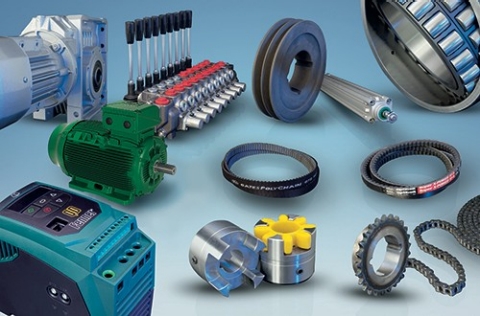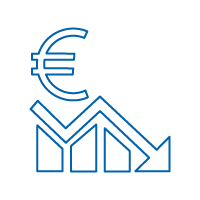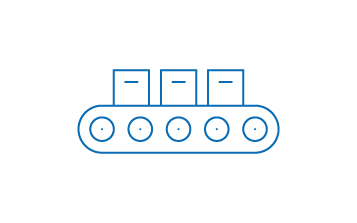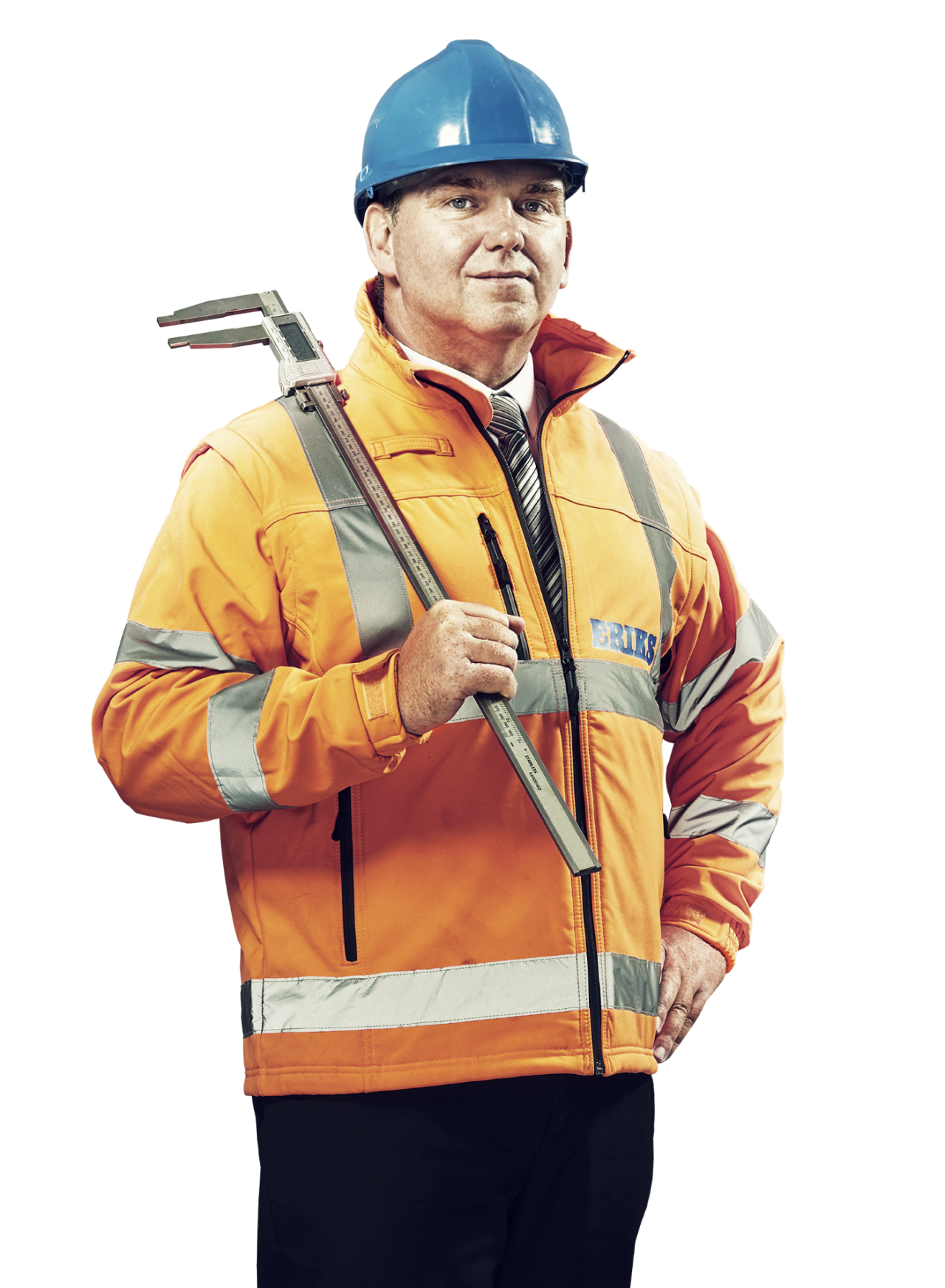In this article
Conveyor Solutions for a sustainable production environment
Conveyor systems that last longer are more energy efficient and require less maintenance. With the right Conveyor Solutions, you are contributing to making your production environment even more sustainable. And you can work effectively to reduce the Total Cost of Ownership. Discover more about which solutions minimise the environmental impact of your conveyor systems in this article.

How do you reduce the environmental impact of conveyor systems?
Conveyor systems are an integral part of the production environment in almost every industry. Efficiency and reliability are essential for keeping operational costs as low as possible. Making conveyor systems more sustainable not only helps companies meet their climate goals but also ensures a lower TCO in the longer term.
When developing sustainable conveyor solutions, it is important to look at the efficiency of the conveyor system holistically. So, looking beyond just the conveyor belt itself. By assessing the performance of all the components in the conveyor system in conjunction with each other, you can target solutions that contribute to a more sustainable production process. Resistance, resilience and lubrication are decisive elements in making the right choices for the sustainability of materials and components.

Less friction, less resistance
When you talk about the sustainability of a conveyor system, it is often about the conveyor belt and other components lasting as long as possible. Longer service life is achievable when you can minimise wear and tear. A careful choice of material for the conveyor belt is one area where considerable gains can still be made. Consider certain plastics, such as polyurethane or PVC, which reduce resistance during the production process. Less resistance means being able to use more lightweight electric motors. Using these will, in turn, lead to less wear and tear and longer service life.
Reduced resistance can also be achieved by reducing friction. Reducing the friction between the metal plate and conveyor belt in supermarkets is a good example. Less friction is created by impregnating the underside of the material, the drive side, with a thin layer of plastic. Polyurethane is usually used for this purpose. This plastic has been greatly improved in recent years, reducing friction even more effectively. By applying this solution, ERIKS was able to reduce energy consumption at a cardboard manufacturer by more than two-thirds. When you realise that their conveyor systems run 365 days a year, 24/7, this has a huge positive impact on the environment, in addition to substantial cost savings.
Sustainable lubrication
Traditionally, lubrication was used for every part of a conveyor system. Excess soapy water creates a lot of harmful effluent. Today, materials are available that no longer require lubrication at all. From a sustainability perspective, these conveyor solutions probably contribute most to reducing harmful environmental damage. This so-called dry or semi-dry conveyor also creates a safer working environment, as the work floor remains dry and non-slippery. Especially in the beverage industry, where most companies were, until recently, still applying the 'old' method of lubrication, this development is leading to a more sustainable production environment.
Material resilience
The resilience of the conveyor belt's material is an important factor for sustainability. Especially in the food industry, where food safety is imperative, conveyor belts must be cleaned regularly. The material here should not only be compatible with the components it comes into contact with, but it should also be resistant to the chemicals used during cleaning. Only then will the material wear out less quickly and the service life increase.
Efficient, sustainable production
Besides a deliberate choice to use sustainable materials, an efficient production process is essential to achieve sustainability. Less energy consumption, more lightweight motors and less scheduled maintenance are key components. All these elements are inextricably linked. If you find a solution for one element, it will always have an impact on the other components in the system.
Reduced energy consumption
Conveyor systems can last a long time with proper maintenance and sensible handling. However, most companies do not realise that outdated systems tend to be inefficient and consume a lot of energy. Replacement with a modern, more energy-efficient system before the end of service life is always advisable. New systems are lighter, requiring less energy during the production process. The biggest savings can be made when your new conveyor system is developed by one supplier. Then you can be sure that all components in the drive train are optimally matched, resulting in a substantial reduction in energy consumption and operational costs.
More lightweight electric motors
When a conveyor system is not yet truly due for replacement, you still have plenty of opportunities to make sustainability improvements in the interim. Replacing heavy electric motors with lighter, energy-efficient ones has the most impact. Testing often shows that lighter electric motors are sufficient to keep the conveyor system running smoothly. Or that the quality of the current electric motors is simply not sufficient. The use of other materials or a change in lubrication can also be grounds for replacement and the targeted reduction of your energy consumption.
Less maintenance
If you can keep the conveyor system working optimally but with less scheduled maintenance, you strike a significant blow in the sustainability process. After all, less maintenance leads to less downtime. The savings here work both ways. On the one hand, you have fewer costs for the engineers and cleaning staff involved in maintenance. And on the other, you can carry out more production at times you had previously scheduled for maintenance. A minor adjustment, for example, reducing maintenance time from 30 to 20 minutes, already significantly impacts production. Especially if your production process relies on many conveyor belts.
Responsible production is profitable
Many manufacturers are reluctant to replace their conveyor systems prematurely because of the initial investment involved. The decision about whether or not to replace is still too often based on the amount of the initial investment versus the daily operational costs for maintenance and cleaning. However, when you realise that a modern, energy-efficient installation will pay for itself within, say, 6 to 12 months, you will always go for this economically advantageous and most sustainable solution.
Investment leads to a lower TCO

A completely new conveyor system or a sustainable solution that improves the performance of your current conveyor system almost always leads to a substantially lower TCO. Lower energy consumption means lower operating costs. A more efficient production process also means less maintenance, less downtime and more production. Better-quality materials results in less wear and tear and extends the average service life. The initial investment will then prove to be only a small part of the TCO!
Emission reductions
Making your conveyor system more sustainable also contributes to achieving the stated climate goals. Reducing your carbon footprint is determined by the use of certain types of plastic. For example, you have biodegradable conveyor belts that may not last as long but can be thrown away after use, after which they degrade by themselves. This reduces emissions enormously. These solutions are mainly used by logistics companies. They can be twice as expensive, but crucial for companies that have to report on their emissions and have stringent targets.
ERIKS Conveyor Solutions

Our Conveyor Solutions involve total solutions where we provide customised conveyor systems. But we also support our customers on installation, management and maintenance issues and offer cleaning advice. A total package of efficient, sustainable solutions for every type of customer in almost every industry. Our conveyor solutions particularly focus on:
- Improved conveyor performance: extended service life, reduced planned and unplanned downtime through reduced maintenance.
- Reduced energy consumption: efficient, energy-efficient systems reduce energy costs. Collecting energy output data becomes increasingly important in this respect
- The total conveyor solution: optimisation of the drive train, where all the components (all of which ERIKS can supply) fit together seamlessly and energy consumption is minimised.
- Development of conveyor systems that comply with the EC1935 food safety standard.
Would you like to know more about our Conveyor Solutions and how we can help make your production process more sustainable? Contact one of our specialists:
T +31 (0)88-8559211
E conveyorsolutions@eriks.nl
Subscribe to our newsletter:
For the latest industry news and updates.
